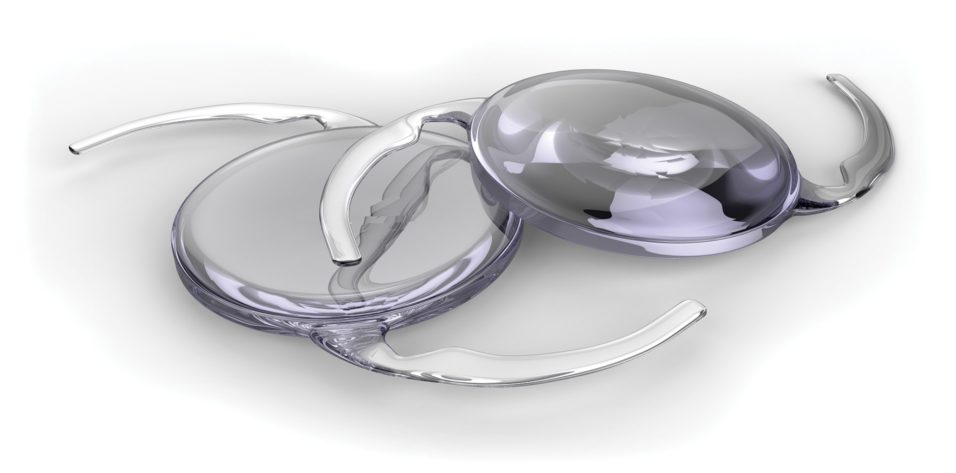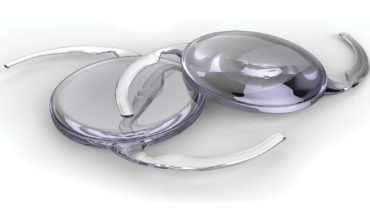CollaborativeEYE (CE): At what point after cataract surgery does it usually become evident that a patient’s toric IOL should be adjusted?
John P. Berdahl, MD: Most of the rotation that occurs with toric lenses happens in the first 24 hours after cataract surgery, although it is often not detected until the first week. (Refraction is not typically done at the 1-day postoperative visit because vision is still pretty variable at that point.) So if you’re noticing that a patient still has a fair amount of astigmatism 1 week after receiving a toric lens, then you should dilate the pupil to determine if the lens is at the axis at which it was intended to be implanted. If it has rotated, then a re-rotation may be warranted.
CE: Are there any other signs or symptoms a comanaging OD should look for at postoperative visits?
Dr. Berdahl: Here’s a quick rundown of what should happen at the 1-week toric visit. Check the patient’s UCVA. If it’s great, just make sure that the rest of the eye looks healthy. If his or her UCVA isn’t great, then perform a refraction, and if the refraction shows astigmatism, then dilate the pupil and determine the position of the toric IOL’s axis based on the dots on the lens inside the eye. Here’s how: Use your slit lamp to create a thin parallel pipette and align that with the dots on the lens. Then, use a leveling app on your smartphone and, with the edge of your phone, determine the exact axis of the toric lens. Next, go to astigmatismfix.com and enter the refraction, the axis of that lens, and the type and power of the lens used. The algorithm will tell you if you should rotate that lens or not.
Another tip here is, if the patient isn’t getting good-quality vision, it’s worth it for the OD to do a gas permeable overrefraction. If the patient sees well with a gas permeable lens but can’t be corrected to 20/20 with a regular refraction, then the issue isn’t the lens. Rather, the patient likely has some form of corneal pathology.
A referring optometrist who follows this protocol would put him or herself at the top of those who deliver advanced toric IOL postoperative care.
The next step would be to send that information back to the surgeon and let him or her know that the patient has residual cylinder and that rotating the lens could help. Then, ask the surgeon if he or she would like to see the patient again.
CE: Let’s say it has been determined that an IOL likely requires rotation. What’s the best way of explaining this to the patient?
Dr. Berdahl: It’s best to be direct. Explain that the surgeon might not have gotten rid of all of the astigmatism and that’s why the patient’s vision is a little blurrier than we would like. Also point out that this is no cause for concern, that it happens sometimes, and that it’s a fixable issue. Let the patient know that you plan to contact his or her surgeon to come up with a plan for addressing the issue and that it may involve rotating the lens or even laser vision correction.
It’s helpful to add that the fix you have proposed is included in the fee for the original toric lens (unless that is not the case). Understanding your comanaging surgeon’s approach is helpful for this conversation, because some operate in a hospital and their hospital may not let a patient come back to the OR for free.
CE: What are the implications of letting an IOL go unrotated?
Dr. Berdahl: Ideally an IOL should be re-rotated within the first 3 to 6 months after surgery. It can be done after 6 months, but be aware that capsular fibrosis can make this surgical maneuver more difficult. The bottom line is that, if neither the surgeon nor the referring OD picks up on the fact that the lens needs to be re-rotated, no permanent damage will be done. The patient, however, will have blurry vision and may resort to wearing a pair of glasses unnecessarily when he or she paid for surgery to not have to wear the glasses as much.
CE: Do you have any pearls for dealing with difficult or unhappy patients?
Dr. Berdahl: If a patient doesn’t end up with the outcome that he or she was hoping to achieve with a premium IOL, just listen to him or her for a while. It’s also important to show that you actually care about the situation. Finally, be sure to come up with a solution—stand shoulder to shoulder with the patient and figure out how the issue can be fixed. Don’t just prescribe a pair of glasses to a patient who’s had a premium IOL. That’s the path of least resistance, and it isn’t really aligned with the goal of the patient. Do the work to get him or her into the end zone. The patient paid a bunch of money and put his or her trust in you and the surgeon, so be sure to work as a team for the care of that patient.
In my experience, most patients who are frustrated with their vision have a legitimate reason to be so and are rarely simply being difficult. Do your best to address the reason or reasons for their unhappiness and improve their situation.
CE: Do you have any comanagement pearls or suggestions to offer to comanaging ODs?
Dr. Berdahl: The OD-MD community that I work in does a great job of this, and I hope that others can do the same: If something isn’t right, let the other party know. Let’s work together and figure out what the best next options are to give the patient the best chance of achieving his or her visual goals.
Any information an optometrist can communicate to the surgeon about how a patient wants to use his or her eyes for the rest of his or her life is always helpful. For example, certain patients may not adapt well to multifocality, and many head down the cataract surgery path hoping that they won’t have to wear glasses much anymore. This information is so helpful when we’re having conversations with patients to match them up with the right technology.
CE: Is there anything else you would like to add about managing patients who require toric IOL adjustments?
Dr. Berdahl: When a patient is referred by an OD to an MD for cataract surgery, not only has that patient transferred his or her trust to the surgeon, but so has the optometrist. MDs know that, in many cases, the optometrist has spent many years cultivating a relationship with the patient, so when both parties put their trust in us, we don’t take it lightly.




